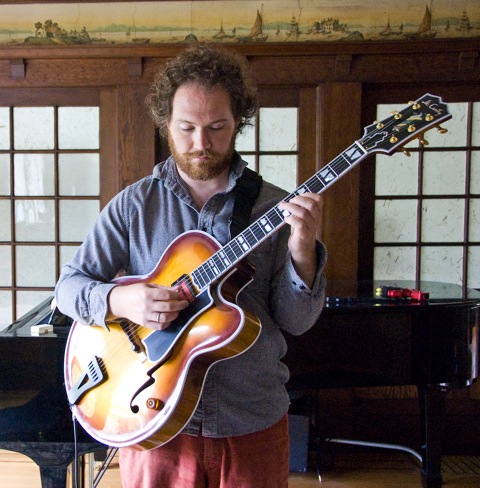
Pannonica 17” (#8) is a full size hollow body arch top designed for playing amplified. The top is about 0.5 mm thicker than a completely acoustic guitar, and the body depth is 1/8” thinner, at 2 and 7/8”; these two modifications make the guitar less likely to feed back, and increase sustain, at the expense of some acoustic volume. The top has a cavity routed for any pickup in the standard Gibson Humbucker size and shape. Currently, a Q-Tuner GL-6 is mounted. There is a single control, a 1 MegOhm volume pot. The price is $8000.
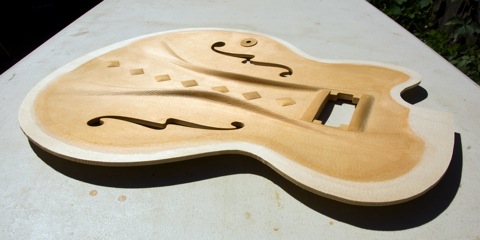
The top has integrally carved curvilinear tone bars. See Models->Arch_Tops->Tone_Bars for more information.
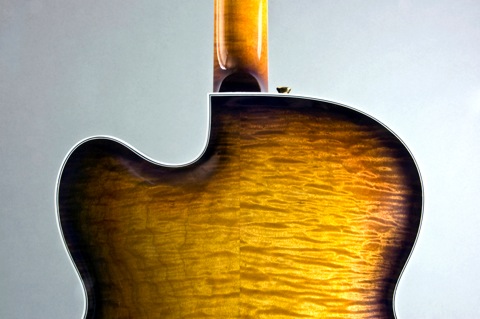
The back and sides are western big leaf maple, and the neck is European maple.
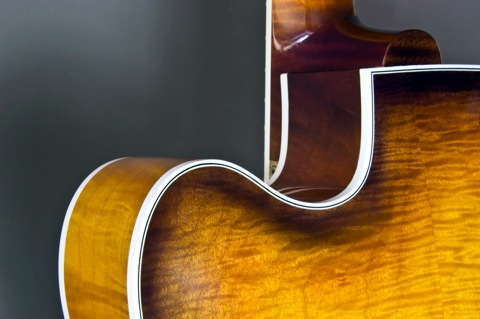
The cutaway is done in the Gibson Premier style.
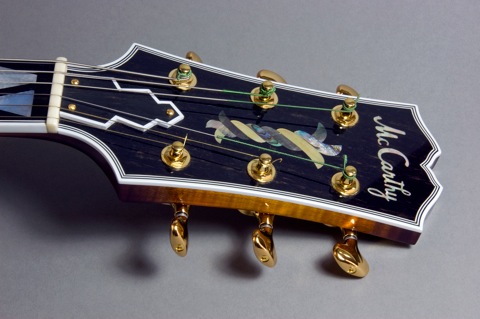
The peg head is bound and inlaid in a style reminiscent of guitars from the classic era. The peg head overlay and truss rod cover are African ebony. The makers logo is Awabi abalam. The three strand decoration is genuine shell: yellow and black pearl, with Paua abalone.
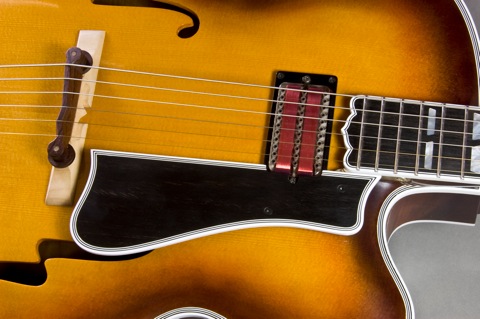
The finger rest is ebony, and floats completely free of the top and rim.
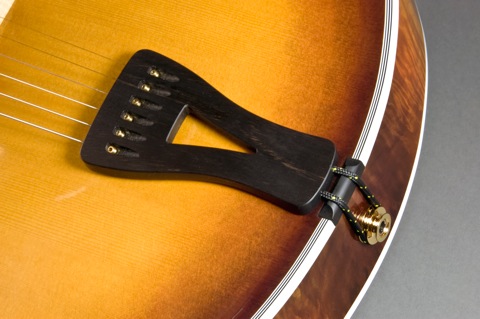
The tailpiece and tailpiece nut are solid ebony.
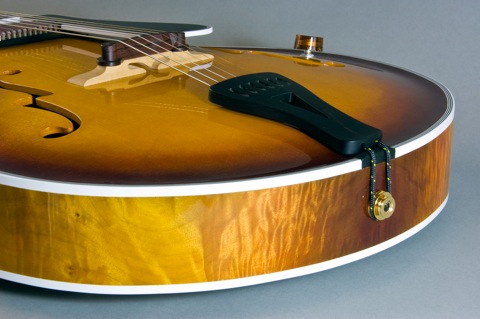
The sides are book matched, which is apparent at the end block.
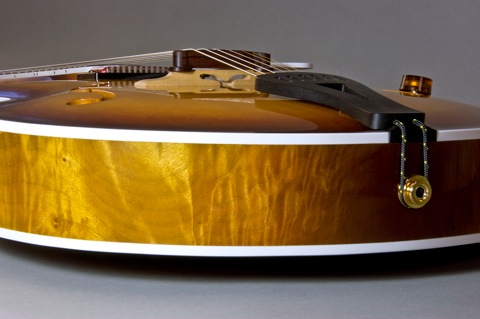
The playing action is as low as the very best solid body electric guitars.
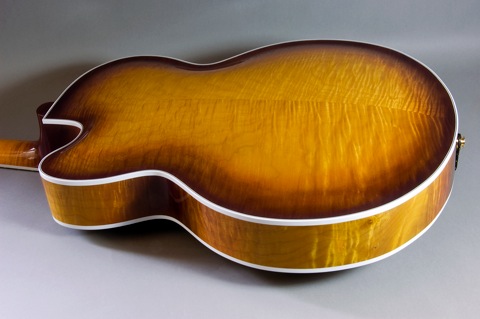
The back is also book matched. The sunburst is fairly transparent, even into the darkest areas.
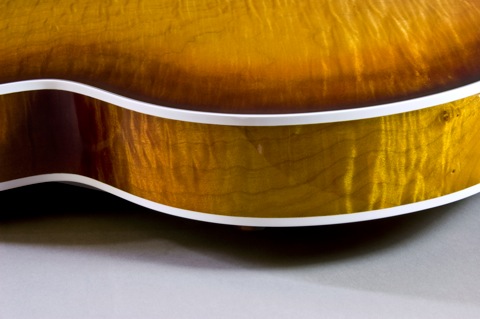
The color variation is even and gradual.
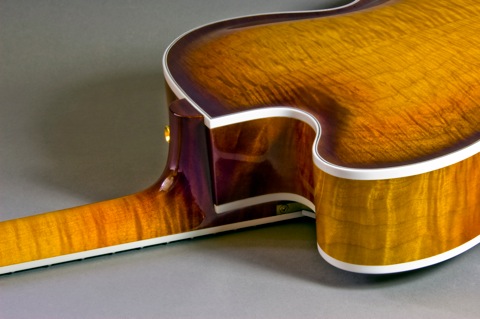
The darkest areas of the sunburst are slightly purple. This is quite apparent in bright sunlight, but hard to capture in a photograph.
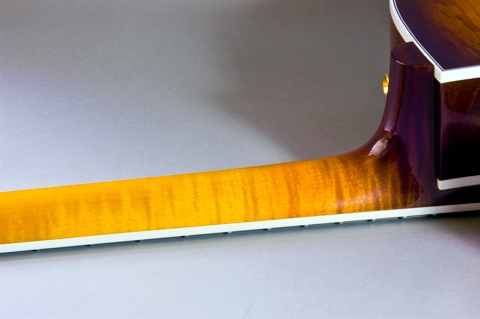
The neck is nicely figured.
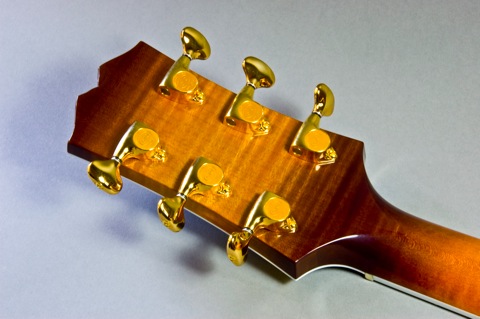
The back of the peg head has been overlaid with a big leaf maple veneer, which forms a neat widows peak in the area behind the nut and first fret.
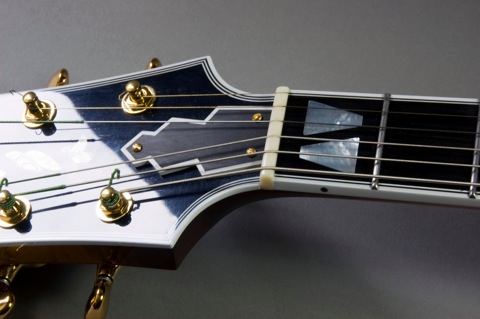
The nut is unbleached bone.
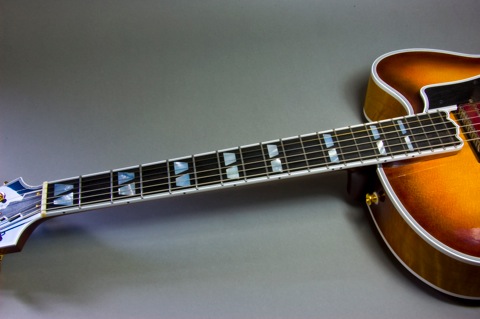
The fingerboard is CNC milled. Fret slots are accurate to better than 1/1000”. There is a compound radius of 9” at the nut, and 15” at the 20th fret. A graduated relief profile of 1/32” is implemented evenly without either side of the fingerboard being more than 1/64” different than the median. The inlays follow this profile. See Models->Arch_Tops->Finger_Board for more information. The paired equilateral trapezoid inlays are a unique pattern, but reminiscent of an instrument from the classic era.
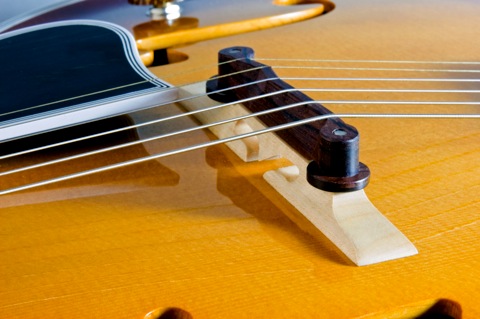
The bridge is adjustable, and better sounding than conventional arch top bridges, or even a one piece bridge. See Models->Arch_Tops->Bridge for more information.
